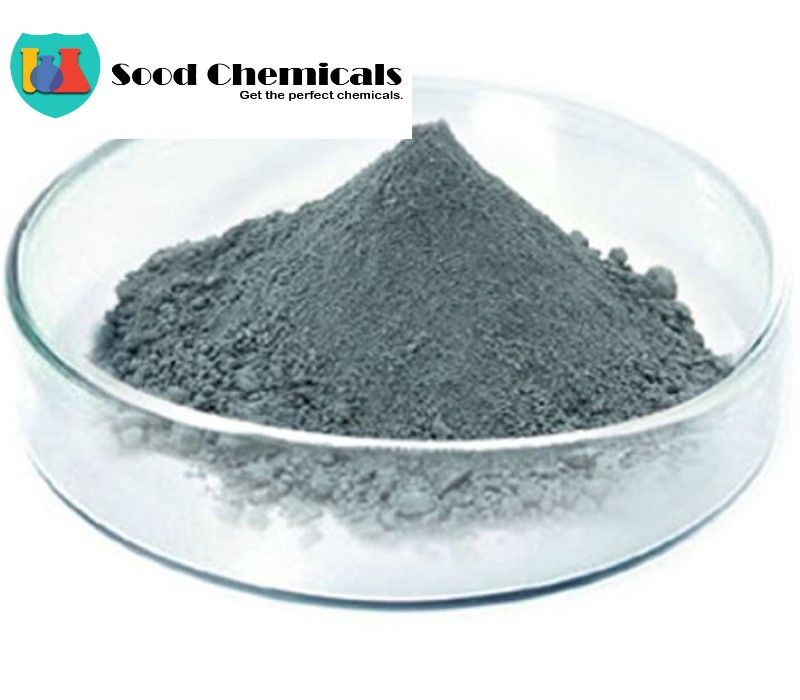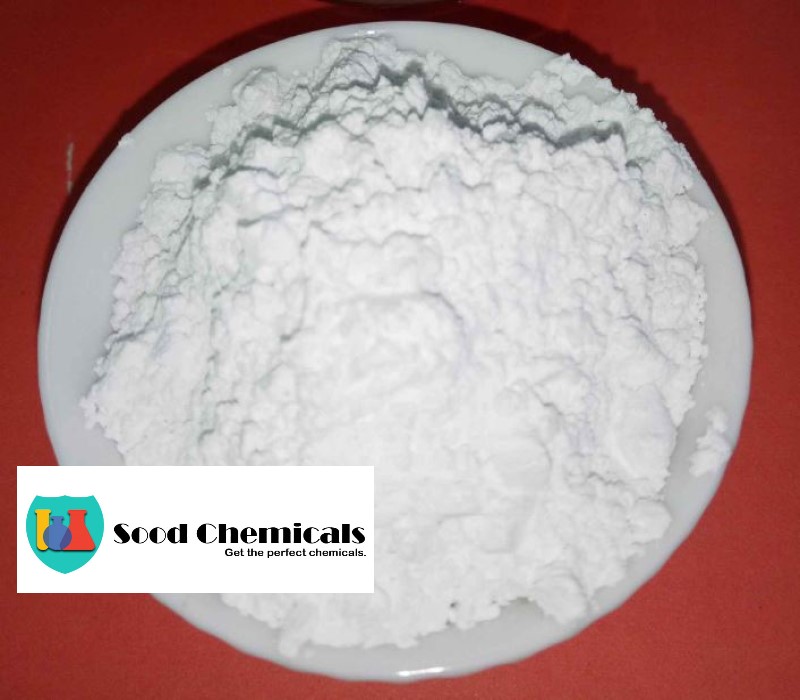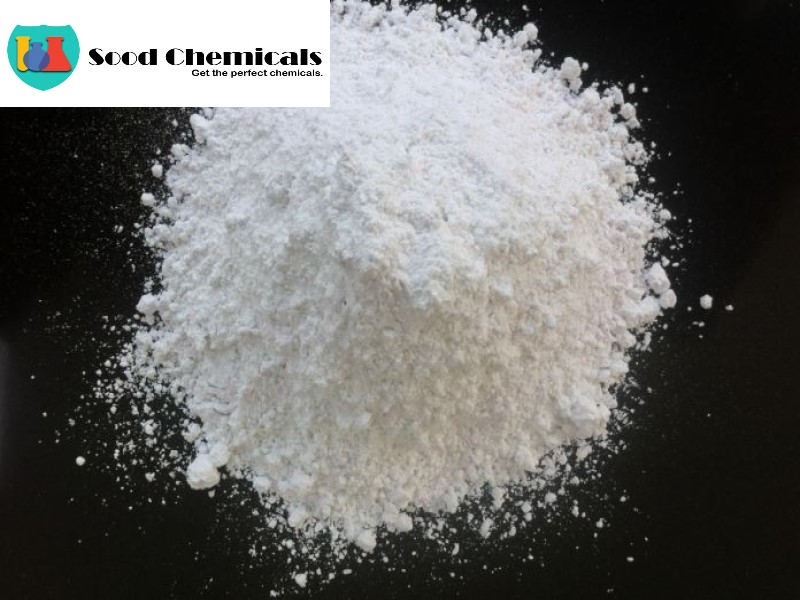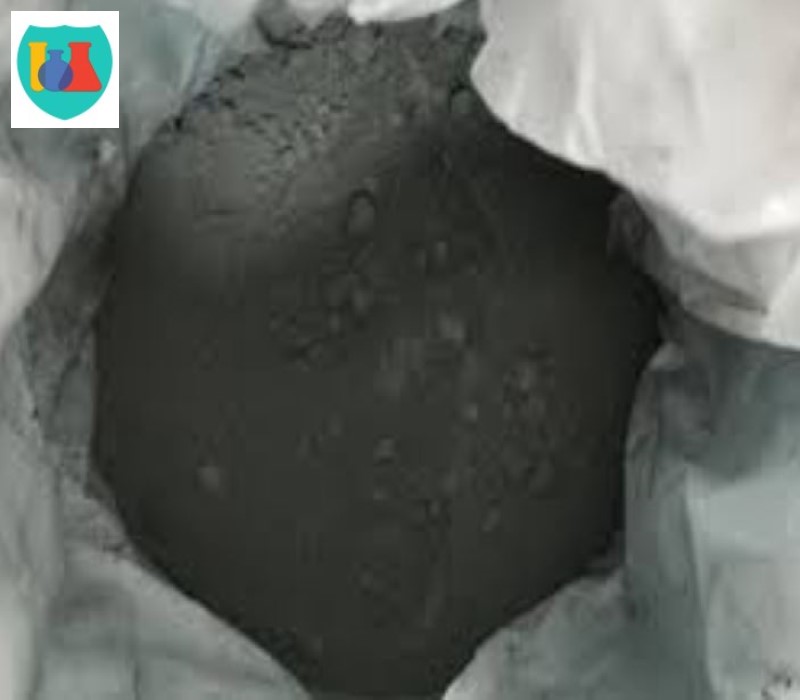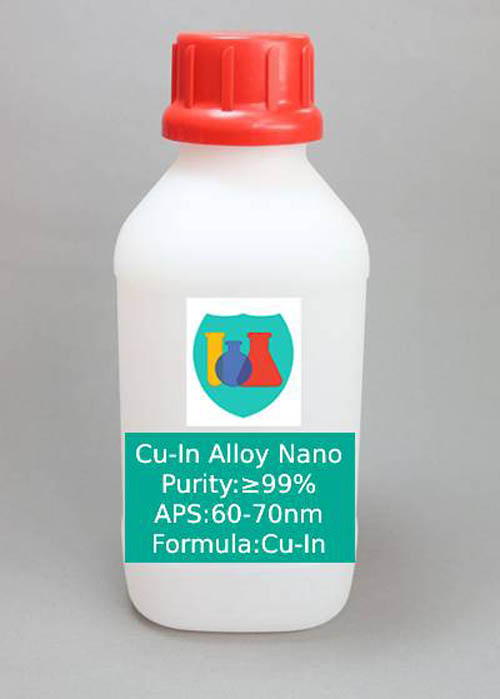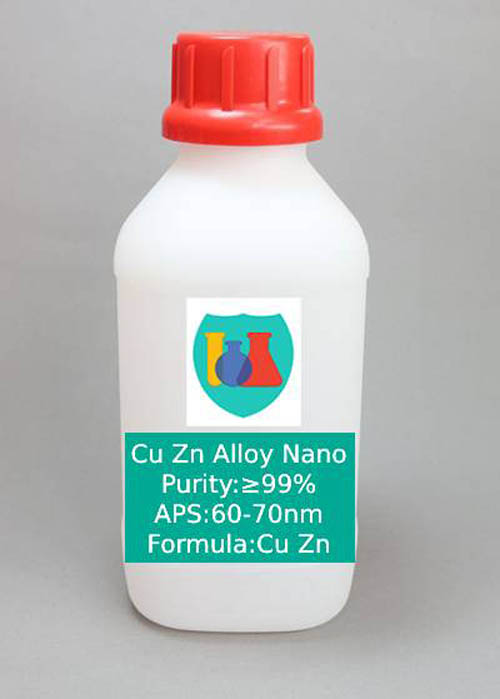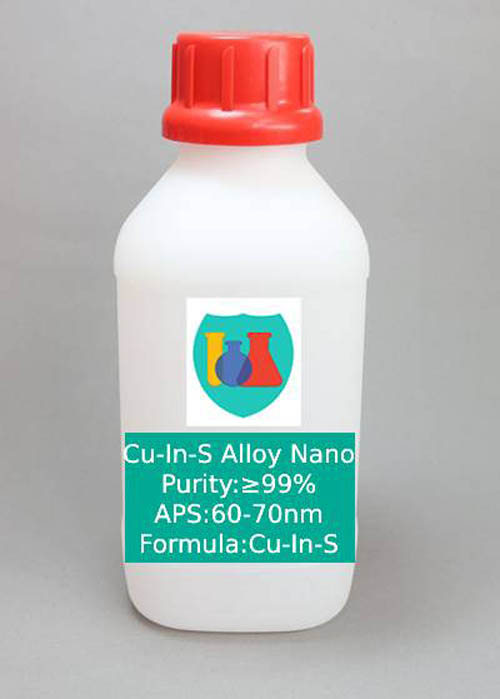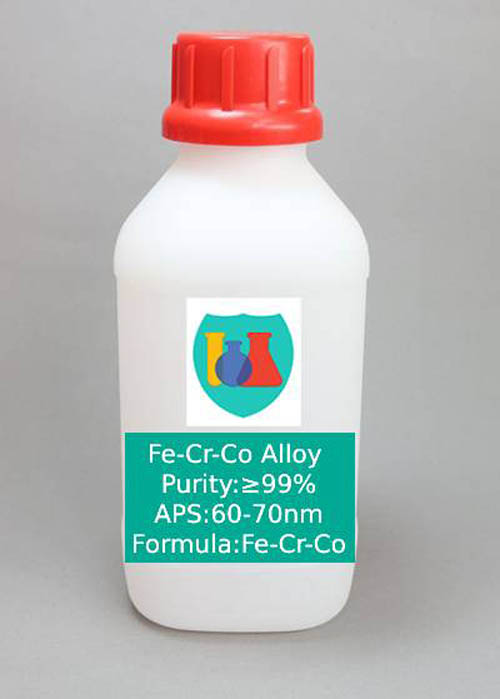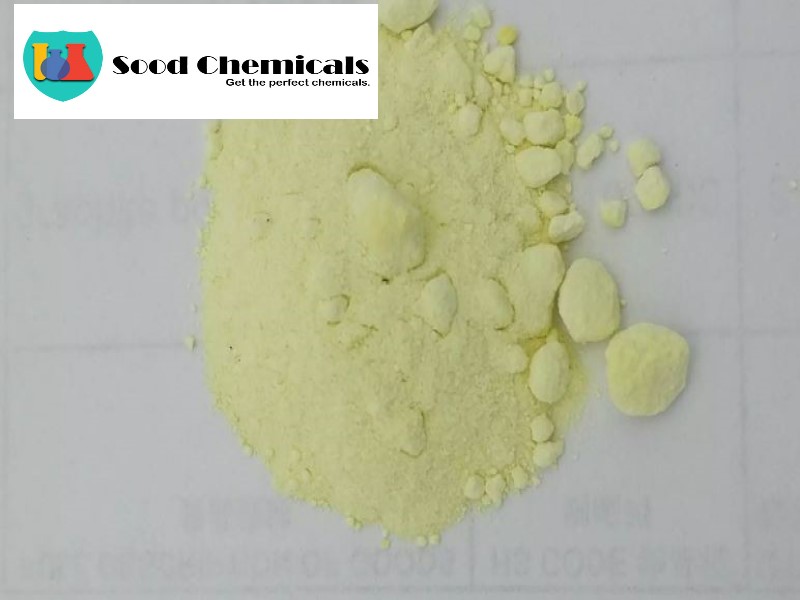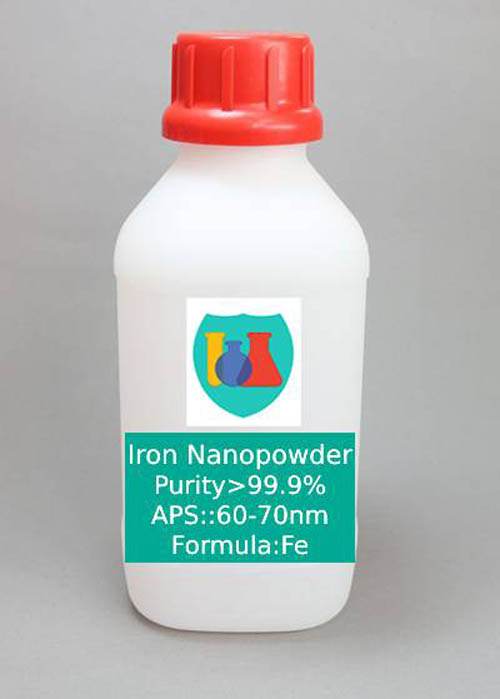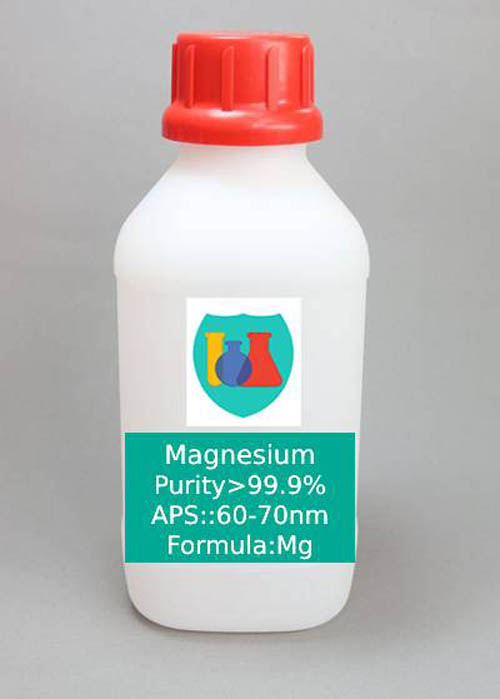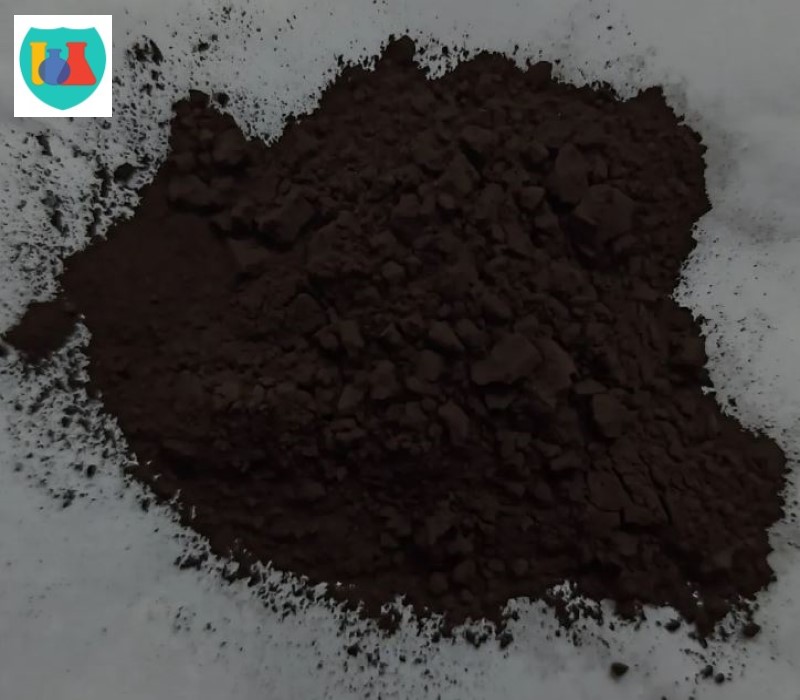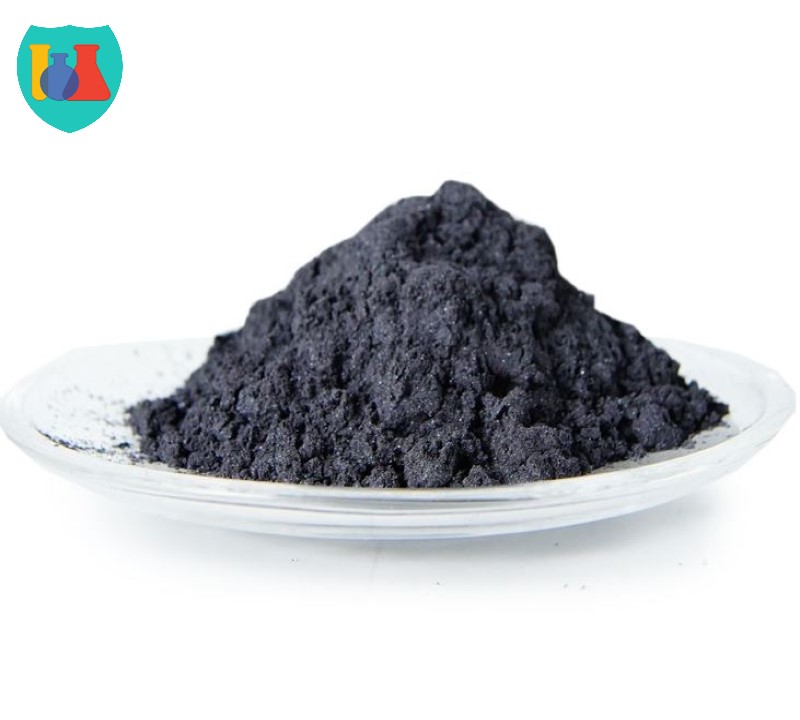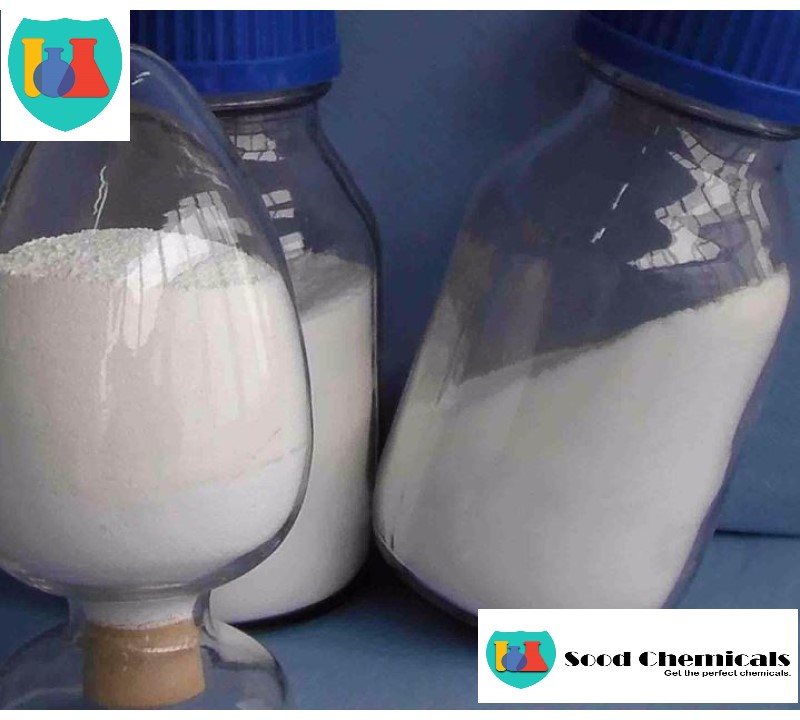Kurukshetra, Haryana
- GST NO. : 06HHVPK3908L1ZL
Nanopowder
Leading Manufacturers, Exporters and Wholesaler of Antimony Tin Oxide Nanopowder, Barium Carbonate Nanopowder, Barium Titanate Nanopowder, Cobalt Iron Oxide Nanopowder, Cu In Alloy Nanopowder, Cu Zn Alloy Nanopowder, Cu-In-S Alloy Nanopowder, Fe-Cr-Co Alloy Nanopowder, Indium Tin Oxide Nanopowder, Iron Nanopowder, Magnesium Nanopowder, Manganese Iron Oxide Nanopowder, Nickel Zinc Iron Oxide Nanopowder and Strontium Titanate Nanopowder from Kurukshetra.
| Business Type | Manufacturer, Exporter, Supplier |
| Pack Size | 10 gram, 50gram, 100gam ,250gram, 500 gram |
| Cas No. | 128221-48-7 |
| Appearance | Powder |
| Purity | ≥99% |
| APS | 60-70 nm (Can be Customized) |
| Formula | SnO2:Sb2O3 |
| Product no. | SCM-SEO-123/22 |
| Molecular Weight | 442.23 g/mol |
| Storage Conditions | Airtight Sealed, Avoid light and keep dry at room temperature. |
Preferred Buyer From
| Location | Worldwide |
ATO can shield heat when it is used in hot mirror, building or glass curtain wall. ATO can be used in the glass of car, train and plane to protection against fog and frost.Due to the decline of the microwave, ATO can be used in computer room and radar shielding and protecting area where needs to shield electromagnetic wave.The product of Antimony Tin Oxide Nanopowder ATO has the excellent quality of electricity and optics. Due to its good conductivity, Antimony Tin Oxide Nanopowder can be widely used in the industry of coating, chemical fiber and polymeric membrane as anti-static material. Antimony Tin Oxide Nanopowder has more advantaged properties in dispersion, weather-ability, thermoplastic, wear resistance, and security than some other conductive materials such as graphite, surfactant, and metallic powder etc. The nanopowder of Antimony Tin Oxide ATO can also be used in the field of optoelectronic display devices, transparent electrode, solar battery, liquid crystal display, catalysis and other industries with its advantages. Chemical resistance: acid resistance, alkali resistance, lightfastness, organic solvents resistance, antioxidant and inflaming retarding.
Related Products :
- Indium Tin Oxide (ITO) Nanopowder / Nanoparticles (ITO, In2O3:SnO2=90:10, 99.99+%, 20-70nm)
- Indium Tin Oxide (ITO) Nanopowder / Nanoparticles (ITO, In2O3:SnO2=95:5, 99.99+%, 20-70nm)
- ITO Nanopowder / Nanoparticles Water Dispersion (ITO, In2O3:SnO2=90:10, 99.99+%, 20-70nm, 20wt%)
- ITO Nanopowder / Nanoparticles Water Dispersion (ITO, In2O3:SnO2=95:5, 99.99%, 20-70nm, 20wt%)
- ITO Nanopowder / Nanoparticles Ethanol Dispersion (ITO, In2O3:SnO2=90:10, 99.99+%, 20-70nm, 20wt%)
- ITO Nanopowder / Nanoparticles Ethanol Dispersion (ITO, In2O3:SnO2=95:5, 99.99%, 20-70nm, 20wt%)
- ITO Nanoparticles / Nanopowder (Indium Tin Oxide 90:10, 18nm, Blue Color)
- ITO Nanopowder / Nanoparticles (Indium Tin Oxide 95:5, 18nm, Blue Color)
- ITO Nanoparticles / Nanopowder Water Dispersion (Indium Tin Oxide 90:10, 18nm, 20wt%, Blue Color)
- ITO Nanopowder / Indium Tin Oxide Nanoparticles Water Dispersion (ITO 95:5, 18nm, 20wt%, Blue Color)
- ITO Nanoparticles / Nanopowder Ethanol Dispersion (Indium Tin Oxide 90:10, 18nm, 20wt%, Blue Color)
- ITO Nanoparticles / Nanopowder Ethanol Dispersion (Indium Tin Oxide 95:5, 18nm, 20wt%, Blue Color)
- Indium Oxide (In2O3) Nanopowder / Nanoparticles (In2O3, High Purity, 99.995%, 20-70 nm)
- Indium Hydroxide In(OH)3 Nanopowder / Nanoparticles (In(OH)3, high purity, 99.99+%, 20-70 nm)
- Antimony Tin Oxide Nanopowder / Nanoparticles (ATO, SnO2:Sb2O3=90:10, 30nm, high purity, 99.95+%)
- Antimony Tin Oxide Nanoparticles / Antimony Tin Oxide Nanopowder (ATO, Laser Synthesis, 8nm, 99.99%)
- Antimony Tin Oxide Nanopowder / Nanoparticles Water Dispersion (ATO, SnO2:Sb2O3=90:10, 20 wt%, 20nm)
- Antimony Tin Oxide Nanoparticles / ATO Nanopowder Ethanol Dispersion (SnO2:Sb2O3=90:10, 20wt%, 20nm)
- AZO - Zinc Oxide Nanopowder Doped with 1-5wt% Aluminum (AZO, 300, 500, 1000nm)
- AZO - Zinc Oxide Nanoparticles Doped with 2wt% Aluminum (AZO, 15nm, high purity 99.99+%)
- AZO Nanoparticles / AZO Nanopowder Water Dispersion (AZO, 15nm, 20wt%)
| Business Type | Manufacturer, Exporter, Supplier |
| Pack Size | 10 gram, 50gram, 100gam ,250gram, 500 gram |
| Cas No. | 513-77-9 |
| Appearance | White Powder |
| Purity | ≥99% |
| APS | 60-70 nm (Can be Customized) |
| Formula | BaCO3 |
| Product no. | SCM-SEO-124/22 |
| Molecular Weight | 197.34 g/mol |
| Storage Conditions | Airtight Sealed, Avoid light and keep dry at room temperature. |
Preferred Buyer From
| Location | Worldwide |
Barium carbonate is a white solid precipitated from a solution of barium hydroxide and urea. The chemical formula for barium carbonate is BaCO3. It also occurs in mineral known as witherite and also prepared from barytes through precipitation. It is toxic in nature. It is also common in turquoise glazes. It is mainly used to remove sulfate impurities from feedstock of the chlor-alkali process. Otherwise it is a common precursor to barium-containing compounds such as ferrites.
| Business Type | Manufacturer, Exporter, Supplier |
| Pack Size | 10 gram, 50gram, 100gam ,250gram, 500 gram |
| Cas No | 12047-27-7 |
| Appearance | White Powder |
| Purity | ≥99% |
| APS | 60-70 nm (Can be Customized) |
| Formula | BaTiO3 |
| Product no. | SCM-SEO-125/22 |
| Molecular Weight | 233.192 g/mol |
| Storage Conditions | Airtight Sealed, Avoid light and keep dry at room temperature. |
Preferred Buyer From
| Location | Worldwide |
High-density optical data storage; Phase conjugated mirrors and lasers; Nonlinear optical devices; Pattern recognition; Micro-capacitors; Ferroelectric ceramics; PTC thermistors; On-chip programmable devices; Optical computing; Optical image processing; Piezoelectric devices; Pyroelectric sensors; Semiconductive ceramics; Varistors; Electro-optic devices; Ceramic capacitors; Dielectric amplifiers; Dynamic holography.
Related Products :
- Barium Titanate (BaTiO3) Nanopowder / Nanoparticle (BaTiO3, 99.9%, 500 nm, Tetragonal)
- Barium Titanate (BaTiO3) Nanopowder / Nanoparticle (BaTiO3, 99.9%, 400 nm, Tetragonal)
- Barium Titanate (BaTiO3) Nanopowder / Nanoparticle (BaTiO3, 99.9%, 300 nm, Tetragonal)
- Barium Titanate (BaTiO3) Nanopowder / Nanoparticle (BaTiO3, 99.9%, 200 nm, Tetragonal)
- Barium Titanate (BaTiO3) Nanopowder / Nanoparticle (BaTiO3, 99.9%, 100 nm, Cubic)
- Barium Titanate (BaTiO3) Nanopowder / Nanoparticle (BaTiO3, 99.9%, 50 nm, Cubic)
- Barium Titanate (BaTiO3) Nanoparticles / Nanopowder 20wt% Water Dispersion
- Barium Titanate (BaTiO3) Nanoparticles / Nanopowder 20wt% Ethanol Dispersion
- Zirconium Barium Titanate Nanoparticles / BZT Nanopowder (Zr0.2BaTi0.8O3, 99.99%, 80nm)
- Barium Strontium Titanium Oxide Nanoparticles / BaTiO3·SrTiO3 Nanopowder
| Business Type | Manufacturer, Exporter, Supplier |
| Pack Size | 10 gram, 50gram, 100gam ,250gram, 500 gram |
| Cas No. | 12052-28-7 |
| Appearance | Black Powder |
| Purity | ≥99% |
| APS | 60-70 nm (Can be Customized) |
| Formula | CoFe2O4 |
| Product no. | SCM-SEO-127/22 |
| Molecular Weight | 234.62 g/mol |
| Storage Conditions | Airtight Sealed, Avoid light and keep dry at room temperature. |
Preferred Buyer From
| Location | Worldwide |
The High-purity products are prepared by using analytically pure chemical reagent as raw materials, and washed by distilled water. Its purity is higher than 99.5%. All our high-purity products are produced by our well-known research universities and national laboratories, not produced by ordinary manufactories. Ordinary products are prepared by using fine chemical raw materials.
Related Products :
- Barium Iron Oxide (BaFe12O19) Nanopowder / Nanoparticle (BaFe12O19, 99.5%, 60 nm)
- Cobalt Iron Oxide (CoFe2O4) Nanopowder / Nanoparticle (CoFe2O4, 99.9%, 30 nm)
- Manganese Iron oxide (MnFe2O4) Nanopowder / Nanoparticle (MnFe2O4, 98.5%, 60 nm)
- Manganese Iron Oxide MnFe2O4 Nanopowder / Nanoparticles (MnFe2O4, 99.99%, 28 nm)
- Nickel Iron Oxide (NiFe2O4) Nanopowder / Nanoparticle (NiFe2O4, 98%, 30 nm)
- Nickel Iron Oxide NiFe2O4 Nanopowder / Nanoparticles (NiFe2O4, 99.99%, 20 nm)
- Nickel Zinc Iron Oxide Nanopowder / Nanoparticle (Ni0.5Zn0.5Fe2O4, 99.995%, 10-30 nm)
- Nickel Cobalt Iron Oxide Nanopowder / Nanoparticle (Ni0.5Co0.5Fe2O4, 99.995%, 40 nm)
- Strontium Iron Oxide Nanopowder / Nanoparticle (SrFe12O19, 99.5%, 60 nm)
- Zinc Iron Oxide (ZnFe2O4) Nanopowder / Nanoparticle (ZnFe2O4, 98.5%,10- 30 nm)
- Zinc Cobalt Iron Oxide Nanopowder / Nanoparticle (Zn0.5Co0.5 Fe2O4, 99.995%, 40 nm)
- Zinc Manganese Iron Oxide Nanopowder / Nanoparticle (Zn0.5Mn0.5 Fe2O4, 99.995%, 30-60nm)
| Business Type | Manufacturer, Exporter, Supplier |
| Pack Size | 10 gram, 50gram, 100gam ,250gram, 500 gram |
| Cas No | 7440-50-8 / 7440-74-6 |
| Appearance | Powder |
| Purity | ≥99% |
| APS | 60-70 nm (Can be Customized) |
| Formula | Cu-In |
| Product no. | SCM-NM-135/22 |
| Storage Conditions | Airtight Sealed, Avoid light and keep dry at room temperature. |
Preferred Buyer From
| Location | Worldwide |
Copper nanoparticles with great catalytic activities can be applied to biosensors and electrochemical sensors. Redox reactions utilized in those sensors are generally irreversible and also require high overpotentials (more energy) to run. In fact, the nanoparticles have the ability to make the redox reactions reversible and to lower the overpotentials when applied to the sensors. A polyacrylamide hydrogel with copper nanoparticles inside is able to determine glucose levels in a sample added to the gel. As phenylboronic acid groups on the hydrogel polymers bind the glucose molecules, the gel becomes swollen. As a result, the copper nanoparticles move apart, changing how incident light is diffracted by the gel. As the glucose levels decrease, the color of gel changes from red to orange to yellow to green.
One of the examples is a glucose sensor. With the use of copper nanoparticles, the sensor does not require any enzyme and therefore has no need to deal with enzyme degradation and denaturation. As described in Figure 3, depending on the level of glucose, the nanoparticles in the sensor diffract the incident light at a different angle. Consequently, the resulting diffracted light gives a different color based on the level of glucose. In fact, the nanoparticles enable the sensor to be more stable at high temperatures and varying pH, and more resistant to toxic chemicals. Moreover, using nanoparticles, native amino acids can be detected. A copper nanoparticle-plated screen-printed carbon electrode functions as a stable and effective sensing system for all 20 amino acid detection.
Related Product :
- Ni-Ti 60 nm, Ni:Ti/50:50
- Sn-Cu 40-100 nm, SN:CU/9:1
- Sn-Cu 40-100 nm, SN:CU/1:9
- Sn-Cu 40-100 nm, SN:CU/92:8
- Fe-Ni-Co 40-100nm, Fe:Ni:Co/55:28:17
- Fe-Ni 40-100 nm, Fe:Ni/5:5
- Fe-Ni 40-100 nm, Fe:Ni/2:8
- Fe-Cr-Co 40-100nm, Fe:Cr:Co/64:25:11
- Cu-Zn 40nm Cu:Zn/5:5
- Cu-Zn 40-100 nm, Cu:Zn/5:5
- Cu-Zn 40-100 nm, Cu:Zn/6:4
- Ag-Cu Nanopowder, 99.9%, <100nm
- Ag-Sn Nanopowder, 99.9%, <100nm
- Ni-Cr-Co Nanopowder, 99.9% <100nm
- Ni-Fe-Mo 40nm 99.9%
- Ni-Fe-Cr 40nm 99.9%
- Al-Si Nanopowder, 99.9% <100nm
- Cr17-Ni14-Mo2-Fe65-Mn1.5 Nanopowder
- Cu-Ni Nano Alloy Powder
- Cu-In Nano Alloy Powder
- Ag-In Nano Alloy Powder
- Cu-In-Ga Nano Alloy Powder
- Cu-In-S Nano Alloy Powder
| Business Type | Manufacturer, Exporter, Supplier |
| Pack Size | 10 gram, 50gram, 100gam ,250gram, 500 gram |
| Cas No | 7440-50-8 / 7440-66-6 |
| Form | Powder |
| Purity | ≥99% |
| APS | 60-70 nm (Can be Customized) |
| Formula | Cu Zn |
| Product no. | SCM-NM-132/22 |
| Storage Conditions | Airtight Sealed, Avoid light and keep dry at room temperature. |
Preferred Buyer From
| Location | Worldwide |
Zinc–copper couple is an alloy of zinc and copper that is employed as a reagent in organic synthesis. The couple has been widely applied as a reagent in other reactions requiring activated zinc metal. Zinc–copper couple does not refer to a rigorously defined chemical structure or alloy composition. The couple may contain varying proportions of copper and zinc; the zinc content is typically greater than 90%, although an alloy containing similar proportions of zinc and copper is used in some cases. The couple is frequently prepared as a darkly-colored powder and is slurried in an ethereal solvent prior to being used in slight excess relative to the substrate. Activation of zinc by copper is essential to the couple’s utility, but the origin of this effect is poorly documented. It is speculated that copper enhances reactivity of zinc at the surface of the alloy.
Related Product :
- Ni-Ti 60 nm, Ni:Ti/50:50
- Sn-Cu 40-100 nm, SN:CU/9:1
- Sn-Cu 40-100 nm, SN:CU/1:9
- Sn-Cu 40-100 nm, SN:CU/92:8
- Fe-Ni-Co 40-100nm, Fe:Ni:Co/55:28:17
- Fe-Ni 40-100 nm, Fe:Ni/5:5
- Fe-Ni 40-100 nm, Fe:Ni/2:8
- Fe-Cr-Co 40-100nm, Fe:Cr:Co/64:25:11
- Cu-Zn 40nm Cu:Zn/5:5
- Cu-Zn 40-100 nm, Cu:Zn/5:5
- Cu-Zn 40-100 nm, Cu:Zn/6:4
- Ag-Cu Nanopowder, 99.9%, <100nm
- Ag-Sn Nanopowder, 99.9%, <100nm
- Ni-Cr-Co Nanopowder, 99.9% <100nm
- Ni-Fe-Mo 40nm 99.9%
- Ni-Fe-Cr 40nm 99.9%
- Al-Si Nanopowder, 99.9% <100nm
- Cr17-Ni14-Mo2-Fe65-Mn1.5 Nanopowder
- Cu-Ni Nano Alloy Powder
- Cu-In Nano Alloy Powder
- Ag-In Nano Alloy Powder
- Cu-In-Ga Nano Alloy Powder
- Cu-In-S Nano Alloy Powder
| Business Type | Manufacturer, Exporter, Supplier |
| Pack Size | 10 gram, 50gram, 100gam ,250gram, 500 gram |
| Cas No | 7440-50-8 / 7440-74-6/ 7704-34-9 |
| Form | Powder |
| Purity | ≥99% |
| APS | 60-70 nm (Can be Customized) |
| Formula | Cu-In-S |
| Product no. | SCM-NM-137/22 |
| Storage Conditions | Airtight Sealed, Avoid light and keep dry at room temperature. |
Preferred Buyer From
| Location | Worldwide |
Cu-In-S Alloy are generally irreversible and also require high overpotentials to run. In fact, the nanoparticles have the ability to make the redox reactions reversible and to lower the overpotentials when applied to the sensors. A polyacrylamide hydrogel with copper nanoparticles inside is able to determine glucose levels in a sample added to the gel. As phenylboronic acid groups on the hydrogel polymers bind the glucose molecules, the gel becomes swollen. As a result, the copper nanoparticles move apart, changing how incident light is diffracted by the gel. As the glucose levels decrease, the color of gel changes from red to orange to yellow to green.
One of the examples is a glucose sensor. With the use of copper nanoparticles, the sensor does not require any enzyme and therefore has no need to deal with enzyme degradation and denaturation. As described, depending on the level of glucose, the nanoparticles in the sensor diffract the incident light at a different angle. Consequently, the resulting diffracted light gives a different color based on the level of glucose. In fact, the nanoparticles enable the sensor to be more stable at high temperatures and varying pH, and more resistant to toxic chemicals. Moreover, using nanoparticles, native amino acids can be detected. A copper nanoparticle-plated screen-printed carbon electrode functions as a stable and effective sensing system for all 20 amino acid detection.
Related Product :
- Ni-Ti 60 nm, Ni:Ti/50:50
- Sn-Cu 40-100 nm, SN:CU/9:1
- Sn-Cu 40-100 nm, SN:CU/1:9
- Sn-Cu 40-100 nm, SN:CU/92:8
- Fe-Ni-Co 40-100nm, Fe:Ni:Co/55:28:17
- Fe-Ni 40-100 nm, Fe:Ni/5:5
- Fe-Ni 40-100 nm, Fe:Ni/2:8
- Fe-Cr-Co 40-100nm, Fe:Cr:Co/64:25:11
- Cu-Zn 40nm Cu:Zn/5:5
- Cu-Zn 40-100 nm, Cu:Zn/5:5
- Cu-Zn 40-100 nm, Cu:Zn/6:4
- Ag-Cu Nanopowder, 99.9%, <100nm
- Ag-Sn Nanopowder, 99.9%, <100nm
- Ni-Cr-Co Nanopowder, 99.9% <100nm
- Ni-Fe-Mo 40nm 99.9%
- Ni-Fe-Cr 40nm 99.9%
- Al-Si Nanopowder, 99.9% <100nm
- Cr17-Ni14-Mo2-Fe65-Mn1.5 Nanopowder
- Cu-Ni Nano Alloy Powder
- Cu-In Nano Alloy Powder
- Ag-In Nano Alloy Powder
- Cu-In-Ga Nano Alloy Powder
- Cu-In-S Nano Alloy Powder
| Business Type | Manufacturer, Exporter, Supplier |
| Storage Conditions | Airtight Sealed, Avoid light and keep dry at room temperature. |
| Pack Size | 10 gram, 50gram, 100gam ,250gram, 500 gram |
| Cas No | 7439-89-6 / 7440-47-3/ 7440-48-4 |
| Form | Powder |
| Purity | ≥99% |
| APS | 60-70 nm (Can be Customized) |
| Formula | Fe-Cr-Co |
| Product no. | SCM-NM-131/22 |
Preferred Buyer From
| Location | Worldwide |
Stainless steel depends on chromium for its appearance and resistance to corrosion. Average chrome content in stainless steel is approx. 18%. It is also used to add chromium to carbon steel. FeCr from South Africa, known as "charge chrome" and produced from a Cr containing ore with a low carbon content, is most commonly used in stainless steel production. Alternatively, high carbon FeCr produced from high-grade ore found in Kazakhstan (among other places) is more commonly used in specialist applications such as engineering steels where a high Cr/Fe ratio and minimum levels of other elements (sulfur, phosphorus, titanium etc.) are important and production of finished metals takes place in small electric arc furnaces compared to large scale blast furnaces.
Related Product :
- Ni-Ti 60 nm, Ni:Ti/50:50
- Sn-Cu 40-100 nm, SN:CU/9:1
- Sn-Cu 40-100 nm, SN:CU/1:9
- Sn-Cu 40-100 nm, SN:CU/92:8
- Fe-Ni-Co 40-100nm, Fe:Ni:Co/55:28:17
- Fe-Ni 40-100 nm, Fe:Ni/5:5
- Fe-Ni 40-100 nm, Fe:Ni/2:8
- Fe-Cr-Co 40-100nm, Fe:Cr:Co/64:25:11
- Cu-Zn 40nm Cu:Zn/5:5
- Cu-Zn 40-100 nm, Cu:Zn/5:5
- Cu-Zn 40-100 nm, Cu:Zn/6:4
- Ag-Cu Nanopowder, 99.9%, <100nm
- Ag-Sn Nanopowder, 99.9%, <100nm
- Ni-Cr-Co Nanopowder, 99.9% <100nm
- Ni-Fe-Mo 40nm 99.9%
- Ni-Fe-Cr 40nm 99.9%
- Al-Si Nanopowder, 99.9% <100nm
- Cr17-Ni14-Mo2-Fe65-Mn1.5 Nanopowder
- Cu-Ni Nano Alloy Powder
- Cu-In Nano Alloy Powder
- Ag-In Nano Alloy Powder
- Cu-In-Ga Nano Alloy Powder
- Cu-In-S Nano Alloy Powder
| Business Type | Manufacturer, Exporter, Supplier |
| Pack Size | 10 gram, 50gram, 100gam ,250gram, 500 gram |
| Cas No. | 50926-11-9 |
| Appearance | Yellow Powder |
| Purity | ≥99% |
| APS | 60-70 nm (Can be Customized) |
| Formula | In2O3:SnO2 |
| Product no. | SCM-SEO-128/22 |
| Molecular Weight | 2633.4 g/mol |
| Storage Conditions | Airtight Sealed, Avoid light and keep dry at room temperature. |
Preferred Buyer From
| Location | Worldwide |
Indium Tin Oxide is a solid solution of indium oxide (In2O3) and tin(IV) oxide (SnO2) with unique properties as a transparent semiconductor material. Indium tin oxide is generally immediately available in most volumes. High purity, submicron and nanopowder forms may be considered. It produces to many standard grades when applicable, including Mil Spec (military grade); ACS, Reagent and Technical Grade; Food, Agricultural and Pharmaceutical Grade; Optical Grade.
Related Products :
- Indium Tin Oxide (ITO) Nanopowder / Nanoparticles (ITO, In2O3:SnO2=90:10, 99.99+%, 20-70nm)
- Indium Tin Oxide (ITO) Nanopowder / Nanoparticles (ITO, In2O3:SnO2=95:5, 99.99+%, 20-70nm)
- ITO Nanopowder / Nanoparticles Water Dispersion (ITO, In2O3:SnO2=90:10, 99.99+%, 20-70nm, 20wt%)
- ITO Nanopowder / Nanoparticles Water Dispersion (ITO, In2O3:SnO2=95:5, 99.99%, 20-70nm, 20wt%)
- ITO Nanopowder / Nanoparticles Ethanol Dispersion (ITO, In2O3:SnO2=90:10, 99.99+%, 20-70nm, 20wt%)
- ITO Nanopowder / Nanoparticles Ethanol Dispersion (ITO, In2O3:SnO2=95:5, 99.99%, 20-70nm, 20wt%)
- ITO Nanoparticles / Nanopowder (Indium Tin Oxide 90:10, 18nm, Blue Color)
- ITO Nanopowder / Nanoparticles (Indium Tin Oxide 95:5, 18nm, Blue Color)
- ITO Nanoparticles / Nanopowder Water Dispersion (Indium Tin Oxide 90:10, 18nm, 20wt%, Blue Color)
- ITO Nanopowder / Indium Tin Oxide Nanoparticles Water Dispersion (ITO 95:5, 18nm, 20wt%, Blue Color)
- ITO Nanoparticles / Nanopowder Ethanol Dispersion (Indium Tin Oxide 90:10, 18nm, 20wt%, Blue Color)
- ITO Nanoparticles / Nanopowder Ethanol Dispersion (Indium Tin Oxide 95:5, 18nm, 20wt%, Blue Color)
- Indium Oxide (In2O3) Nanopowder / Nanoparticles (In2O3, High Purity, 99.995%, 20-70 nm)
- Indium Hydroxide In(OH)3 Nanopowder / Nanoparticles (In(OH)3, high purity, 99.99+%, 20-70 nm)
- Antimony Tin Oxide Nanopowder / Nanoparticles (ATO, SnO2:Sb2O3=90:10, 30nm, high purity, 99.95+%)
- Antimony Tin Oxide Nanoparticles / Antimony Tin Oxide Nanopowder (ATO, Laser Synthesis, 8nm, 99.99%)
- Antimony Tin Oxide Nanopowder / Nanoparticles Water Dispersion (ATO, SnO2:Sb2O3=90:10, 20 wt%, 20nm)
- Antimony Tin Oxide Nanoparticles / ATO Nanopowder Ethanol Dispersion (SnO2:Sb2O3=90:10, 20wt%, 20nm)
| Business Type | Manufacturer, Exporter, Supplier |
| Pack Size | 10 gram, 50gram, 100gam ,250gram, 500 gram |
| Cas No | 7439-89-6 |
| Form | Powder |
| Purity | ≥99.9% |
| APS | 60-70 nm (Can be Customized) |
| Formula | Fe |
| Product no. | SCM-NM-109/22 |
| Molar Weight | 55.845 u |
| Storage Conditions | Airtight Sealed, Avoid light and keep dry at room temperature. |
Preferred Buyer From
| Location | Worldwide |
Utilized as probes of fundamental magnetic interactions; Media for magnetic data storage Ferro fluids for rotary vacuum seals; Biomedical applications such as magnetic separation and contrast agents for magnetic resonance imaging. In the environmental field in the degradation of chlorinated hydrocarbons and hard metals in contaminated soils; Single electron transistor. Damp reunion will affect its dispersion performance and using effects, therefore, this product should be sealed in vacuum and stored in cool and dry room and it should not be exposure to air. In addition, the iron nanoparticles should be avoided under stress.
Related Products :
- Iron Fe Powder, 99% (1,,4,,5, 8, 10, 45, 75, 150, 200, 300um)
- Iron Powder / Fe Powder (Fe, 99.9%, 800nm)
- Fe Spherical Powder / Iron Spherical Powder (Fe, 800nm, Spherical, 99.9%)
- Fe Spherical Powder / Iron Spherical Powder (Fe, 3um, Spherical, 99.9%)
- Iron Fe Nanopowder / Nanoparticle (Fe, 99.5+%, 95-105nm, metal basis)
- Iron Fe Nanopowder / Nanoparticle (Fe, 99.5+%, 65-75nm, metal basis)
- Iron Fe Nanopowder / Nanoparticle (Fe, 99.5+%, 35-45nm, metal basis)
- Iron Fe Nanopowder / Nanoparticle (Fe, 99.5%, 25 nm, partially passivated, Metal basis)
- Iron Fe Nanopowder / Nanoparticle (Fe, 99.5%, 25 nm, carbon coated, Metal basis)
- Fe-Ni-Co Alloy Nanopowder / Nanoparticle, 99.9%, 40 nm-100 nm, Fe:Ni:Co/55:28:17
- Fe-Ni Alloy Nanopowder / Nanoparticle, 99.9%, 40 nm-100 nm, Fe:Ni/5:5
- Fe-Ni Alloy Nanopowder / Nanoparticle, 99.9%, 40 nm-100 nm, Fe:Ni/2:8
- Fe-Cr-Co Alloy Nanopowder / Nanoparticle, 99.9%, 40 nm-100nm, Fe:Cr:Co/64:25:11
- Fe Nanopowder / Fe Nanoparticles 25nm 5wt% Ethanol Dispersion
- Iron Nanopowder / Iron Nanoparticles 25nm 5wt% NMP Dispersion
- Iron Nanoparticles / Iron Nanopowder 25nm 5wt% Isopropanol Dispersion
- Iron Nanoparticles / Iron Nanopowder 25nm 5wt% Acetone Dispersion
- Fe Nanoparticles / Fe Nanopowder 25nm 5wt% Ethylene Glycol Dispersion
- Fe Nanoparticles / Fe Nanopowder 25nm 5wt% Propylene Glycol Dispersion
- Fe Nanoparticles / Fe Nanopowder 25nm 5wt% Toluene Dispersion
| Business Type | Manufacturer, Exporter, Supplier |
| Pack Size | 10 gram, 50gram, 100gam ,250gram, 500 gram |
| Cas No. | 7439-95-4 |
| Form | Powder |
| Purity | ≥99.9% |
| APS | 60-70 nm (Can be Customized) |
| Formula | Mg |
| Product no. | SCM-NM-111/22 |
| Molar Weight | 24.3 gm |
| Storage Conditions | Airtight Sealed, Avoid light and keep dry at room temperature. |
Preferred Buyer From
| Location | Worldwide |
Magnesium is a chemical element with the symbol Mg and atomic number 12. It is a shiny gray solid which shares many physical and chemical properties with the other five alkaline earth metals This element is produced in large, aging stars from the sequential addition of three helium nuclei to a carbon nucleus. When such stars explode as supernovas, much of the magnesium is expelled into the interstellar medium where it may recycle into new star systems.
Magnesium is the eighth most abundant element in the Earth's crust and the fourth most common element in the Earth (after iron, oxygen and silicon), making up 13% of the planet's mass and a large fraction of the planet's mantle. It is the third most abundant element dissolved in seawater, after sodium and chlorine. Magnesium occurs naturally only in combination with other elements, where it almost always has a +2 oxidation state. The free element (metal) can be produced artificially, and is highly reactive.
The free metal burns with a characteristic brilliant-white light. The metal is now obtained mainly by electrolysis of magnesium salts obtained from brine, and is used primarily as a component in aluminium-magnesium alloys, sometimes called magnalium or magnelium. Magnesium is less dense than aluminium, and the alloy of the two is prized for its combination of lightness and strength.
Related Products:
- Magnesium MicroPowder (Mg) -10um
- Magnesium MicroPowder (Mg) - 40um
- Magnesium MicroPowder (Mg) - 75um
- Magnesium MicroPowder (Mg) - 100um
- Magnesium MicroPowder (Mg) -800nm
| Business Type | Manufacturer, Exporter, Supplier |
| Product Name | 10 gram, 50gram, 100gam ,250gram, 500 gram |
| Cas No | 1344-43-0 |
| Appearance | Black Powder |
| Purity | ≥99% |
| APS | 60-70 nm (Can be Customized) |
| Formula | MnFe2O4 |
| Product no. | SCM-SEO-129/22 |
| Molecular Weight | 230.63 g/mol |
Preferred Buyer From
| Location | Worldwide |
Researchers are exploring ways to use nanoparticles in multiple applications across various fields such as biology, physics, chemistry, pharmaceutical drug manufacture, polymer science, toxicology, cosmetics, optical components, and mechanical engineering. This article discusses the properties and applications of manganese iron oxide nanoparticles. Manganese is a Block D, Period 4 element, iron is a Block D, Period 4 element, and oxygen is a Block P, Period 2 element. Manganese is found in braunite, psilomelane, pyrolusite, and rhodochrosite, while iron is found in the minerals hematite and magnetite.
Related Products :
- Barium Iron Oxide (BaFe12O19) Nanopowder / Nanoparticle (BaFe12O19, 99.5%, 60 nm)
- Cobalt Iron Oxide (CoFe2O4) Nanopowder / Nanoparticle (CoFe2O4, 99.9%, 30 nm)
- Manganese Iron oxide (MnFe2O4) Nanopowder / Nanoparticle (MnFe2O4, 98.5%, 60 nm)
- Manganese Iron Oxide MnFe2O4 Nanopowder / Nanoparticles (MnFe2O4, 99.99%, 28 nm)
- Nickel Iron Oxide (NiFe2O4) Nanopowder / Nanoparticle (NiFe2O4, 98%, 30 nm)
- Nickel Iron Oxide NiFe2O4 Nanopowder / Nanoparticles (NiFe2O4, 99.99%, 20 nm)
- Nickel Zinc Iron Oxide Nanopowder / Nanoparticle (Ni0.5Zn0.5Fe2O4, 99.995%, 10-30 nm)
- Nickel Cobalt Iron Oxide Nanopowder / Nanoparticle (Ni0.5Co0.5Fe2O4, 99.995%, 40 nm)
- Strontium Iron Oxide Nanopowder / Nanoparticle (SrFe12O19, 99.5%, 60 nm)
- Zinc Iron Oxide (ZnFe2O4) Nanopowder / Nanoparticle (ZnFe2O4, 98.5%,10- 30 nm)
- Zinc Cobalt Iron Oxide Nanopowder / Nanoparticle (Zn0.5Co0.5 Fe2O4, 99.995%, 40 nm)
- Zinc Manganese Iron Oxide Nanopowder / Nanoparticle (Zn0.5Mn0.5 Fe2O4, 99.995%, 30-60nm)
| Business Type | Manufacturer, Exporter, Supplier |
| Pack Size | 10 gram, 50gram, 100gam ,250gram, 500 gram |
| Cas No. | 12645-50-0 |
| Appearance | Powder |
| Purity | ≥99% |
| APS | 60-70 nm (Can be Customized) |
| Formula | NiZnFe2O4 |
| Product no. | SCM-SEO-130/22 |
| Molecular Weight | 307.8 g/mol |
Preferred Buyer From
| Location | Worldwide |
The High-purity products are prepared by using analytically pure chemical reagent as raw materials, and washed by distilled water. Its purity is higher than 99.5%. All our high-purity products are produced by our well-known research universities and national laboratories, not produced by ordinary manufactories. Ordinary products are prepared by using fine chemical raw materials, purity is up to 98-99%.
The following are the chief applications of nickel zinc iron oxide nanoparticles:
Preparation of nickel cermet which is used as the anode layer of solid oxide fuel cells (SOFC) In lithium ion micro batteries as lithium nickel zinc iron cathode In plastics, textiles, electro chromic coatings In nanofiber, nanowire, alloys and catalyst applications.
Related Products :
- Barium Iron Oxide (BaFe12O19) Nanopowder / Nanoparticle (BaFe12O19, 99.5%, 60 nm)
- Cobalt Iron Oxide (CoFe2O4) Nanopowder / Nanoparticle (CoFe2O4, 99.9%, 30 nm)
- Manganese Iron oxide (MnFe2O4) Nanopowder / Nanoparticle (MnFe2O4, 98.5%, 60 nm)
- Manganese Iron Oxide MnFe2O4 Nanopowder / Nanoparticles (MnFe2O4, 99.99%, 28 nm)
- Nickel Iron Oxide (NiFe2O4) Nanopowder / Nanoparticle (NiFe2O4, 98%, 30 nm)
- Nickel Iron Oxide NiFe2O4 Nanopowder / Nanoparticles (NiFe2O4, 99.99%, 20 nm)
- Nickel Zinc Iron Oxide Nanopowder / Nanoparticle (Ni0.5Zn0.5Fe2O4, 99.995%, 10-30 nm)
- Nickel Cobalt Iron Oxide Nanopowder / Nanoparticle (Ni0.5Co0.5Fe2O4, 99.995%, 40 nm)
- Strontium Iron Oxide Nanopowder / Nanoparticle (SrFe12O19, 99.5%, 60 nm)
- Zinc Iron Oxide (ZnFe2O4) Nanopowder / Nanoparticle (ZnFe2O4, 98.5%,10- 30 nm)
- Zinc Cobalt Iron Oxide Nanopowder / Nanoparticle (Zn0.5Co0.5 Fe2O4, 99.995%, 40 nm)
- Zinc Manganese Iron Oxide Nanopowder / Nanoparticle (Zn0.5Mn0.5 Fe2O4, 99.995%, 30-60nm)
| Business Type | Manufacturer, Exporter, Supplier |
| Pack Size | 10 gram, 50gram, 100gam ,250gram, 500 gram |
| Cas No. | 12060-59-2 |
| Appearance | White Powder |
| Purity | ≥99% |
| APS | 60-70 nm (Can be Customized) |
| Formula | SrTiO3 |
| Product no. | SCM-SEO-131/22 |
| Molecular Weight | 183.49 g/mol |
| Storage Conditions | Airtight Sealed, Avoid light and keep dry at room temperature. |
Preferred Buyer From
| Location | Worldwide |
Tunable microwave capacitors for communication; Phosphor for field-emission display in flat panel displays; PTC thermistors; Microwave solitons; Varistors; Nonvolatile memory; Electrical insulation; Capacitor dielectric of Gbit-scale DRAMs. Giant piezoelectric effect at cryogenic temperatures; Magnetic field insensitive thermometer; High-voltage capacitors; Ultralow-temperature scanning microscopies; Micro-capacitors; High density dynamic random access memories; Decoupling capacitors; Oxygen sensors; Photocatalyst; Planar capacitors; Semiconductive ceramics; Pyroelectric far-infrared dectors; Soft-phonon devices; Stochastic resonance; Trunable resonant circuits; Varactors.
Related Products :
- Barium Titanate (BaTiO3) Nanopowder / Nanoparticles (BaTiO3, 99.9%, 500 nm, Tetragonal)
- Barium Titanate (BaTiO3) Nanopowder / Nanoparticles (BaTiO3, 99.9%, 400 nm, Tetragonal)
- Barium Titanate (BaTiO3) Nanopowder / Nanoparticles (BaTiO3, 99.9%, 300 nm, Tetragonal)
- Barium Titanate (BaTiO3) Nanopowder / Nanoparticles (BaTiO3, 99.9%, 200 nm, Tetragonal)
- Barium Titanate (BaTiO3) Nanopowder / Nanoparticles (BaTiO3, 99.9%, 100 nm, Cubic)
- Barium Titanate (BaTiO3) Nanopowder / Nanoparticles (BaTiO3, 99.9%, 50 nm, Cubic)
- Barium Titanate (BaTiO3) Nanoparticles / Nanopowder 20wt% Water Dispersion
- Barium Titanate (BaTiO3) Nanoparticles / Nanopowder 20wt% Ethanol Dispersion


